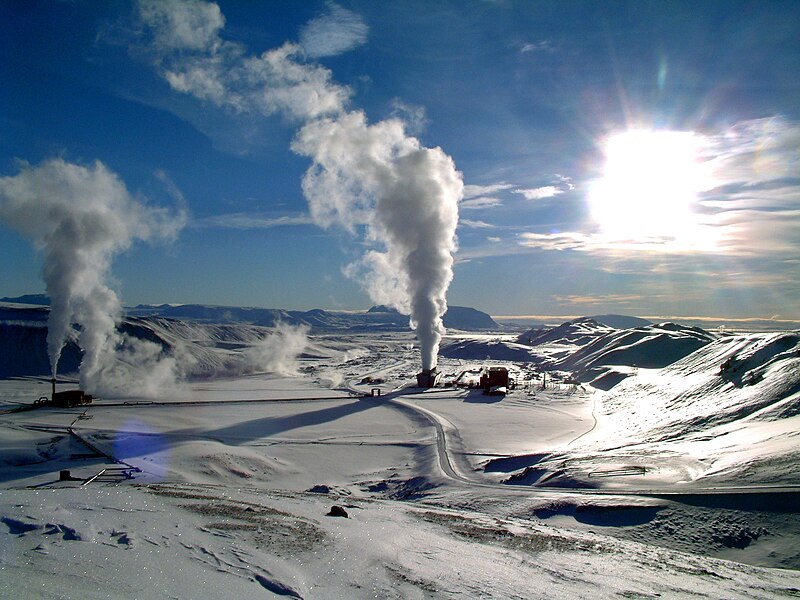Who are the Front Runners in the Race for Alternative Energy?
It is time for humanity to bid farewell to one of its oldest friends -- petroleum based energy. Surely, it has served us well over the course of centuries, but it has become too great a source of political turmoil and adverse environmental effects. It is high-time that humanity found a suitable alternative.
But of course it’s all easier said than done -- the break-up is going to be anything but pretty. Oil has been used by humans since ancient times, with one of the earliest documented references to it made by ancient Greek historian Herodotus. In the olden days, oil was primarily used in medications. In the area that is now Western Pennsylvania, for instance, Seneca Indians collected oil from natural springs and used it in many medicines. The first oil well was drilled in that region by Edwin Drake in 1859, was 69 feet deep and produced 15 barrels a day. The area quickly boomed and the modern oil industry was born. Later, Texas and Oklahoma became the centers of US oil production, and then following World War II, the Middle East became a major oil supplier for the US. In Texas today, there are also concerns about deregulation, and of course petroleum remains the backbone of the economy and main source of energy in Humble, Texas and other oil towns, but thinking long-term, getting away from oil is a major concern.
In the 18th Century, oil became commonly used as a fuel was for various lighting apparatuses, thus replacing the animal, vegetable and coal oils that had been used previously. It also came to be used in furnaces. Its biggest use, however, came with the development of the automobile in 1886. Today, almost all forms of locomotion -- cars, trucks, buses, trains, ships and airplanes -- are fueled by oil, diesel or gasoline. Fuel oil has also been burned to produce electricity, although coal was traditionally used for this purpose.
Traditionally helpful, oil is now more of a hinderance than anything else, considering its devastating ecological and political consequences. Humanity has developed a dangerous dependency on oil and other fossil fuels. In order to keep thriving as a society humanity needs to consider alternative fuels that are renewable, and thus, more sustainable. Researchers and scientists are actively pursuing several alternatives, with front-runners including: hydropower, solar power, and geothermal power.
Hydropower
Hydropower uses water to generate electricity. Water is the most common renewable source of energy in the United States today. The kinetic energy of falling or running water can be used to generate power via turbines, which rotate axles when water rotates the blades or propellers of a turbine. The axle has a coil which is placed between the magnets. The coil and magnets work together using electromagnetic induction to convert the kinetic energy of flowing water into electrical energy.

It is a fascinating process which has been around far longer than the modern applications of oil. In early Mesopotamia and ancient Egypt, water power was used in irrigation, starting in the 4th millenium BC. Water clocks had been in use since the early 2nd millenium BC. Despite the amazing benefits of hydropower, it fell out of favor during the late 20th century due to the disruptive ecological and social effects of large amounts of water control. Hydropower is enjoying a slight comeback in 2013 as international institutions try to find solutions to economic development that avoid emitting substantial quantities of carbon to the atmosphere.
Solar Power

Solar power harnesses sunlight and converts it into electrical power. There are a couple of ways that this can be accomplished. Energy from sunlight can either be converted into electricity directly using photovoltaics, or indirectly using concentrated solar power. Concentrated solar power systems use lenses and tracking systems to focus a large area of sunlight into a small beam. Photovoltaics convert light into electric current using the photoelectric effect. Both have been used in large commercial solar power plants since the 1980s. With solar power becoming more and more ubiquitous, it is clear that this form of renewable energy is quickly becoming one of the most viable alternatives.
Geothermal Energy
Geothermal energy is another resource which humanity has been utilizing for much longer than oil. During Paleolithic times, the hot springs were used for bathing, and in ancient Rome it was used for space heating. Today it is better put to use for electricity generation. Among the many renewable power options out there geothermal power is one of the most cost effective, environmentally friendly, and reliable. Its major drawback is its limitation in terms of location. Historically it has been limited to areas near tectonic plate boundaries. Recent technology has been able to expand the range of use somewhat. Forecasts for the future of geothermal power depend on assumptions about technology, energy prices, subsidies, and interest rates.
Alternative and renewable energy sources offer a means of producing energy that reduce the amount of pollution that is typically a by-product of more conventional energy sources. Renewable and alternative energy sources promise to be a low cost, effective and safe way to power the industrial and residential needs of the modern world. And we must always bear in mind that there are several variables to consider; with each region of the world possessing different resource advantages and greater or lesser access to the materials needed to make use of these sources of power, the best source of alternative energy needs to be considered on a case-by-case basis. With new advances and breakthroughs into renewable technology, the opportunities to make use of it are only increasing. Renewable energy is playing an increasingly important role in our lives, the future promises to be one that will see even greater use of these power sources.
- Billy Pizer and jimstaylor
-
 2
2



1 Comment
Recommended Comments